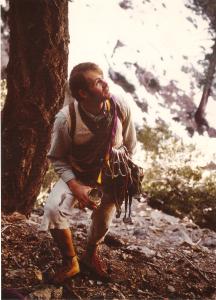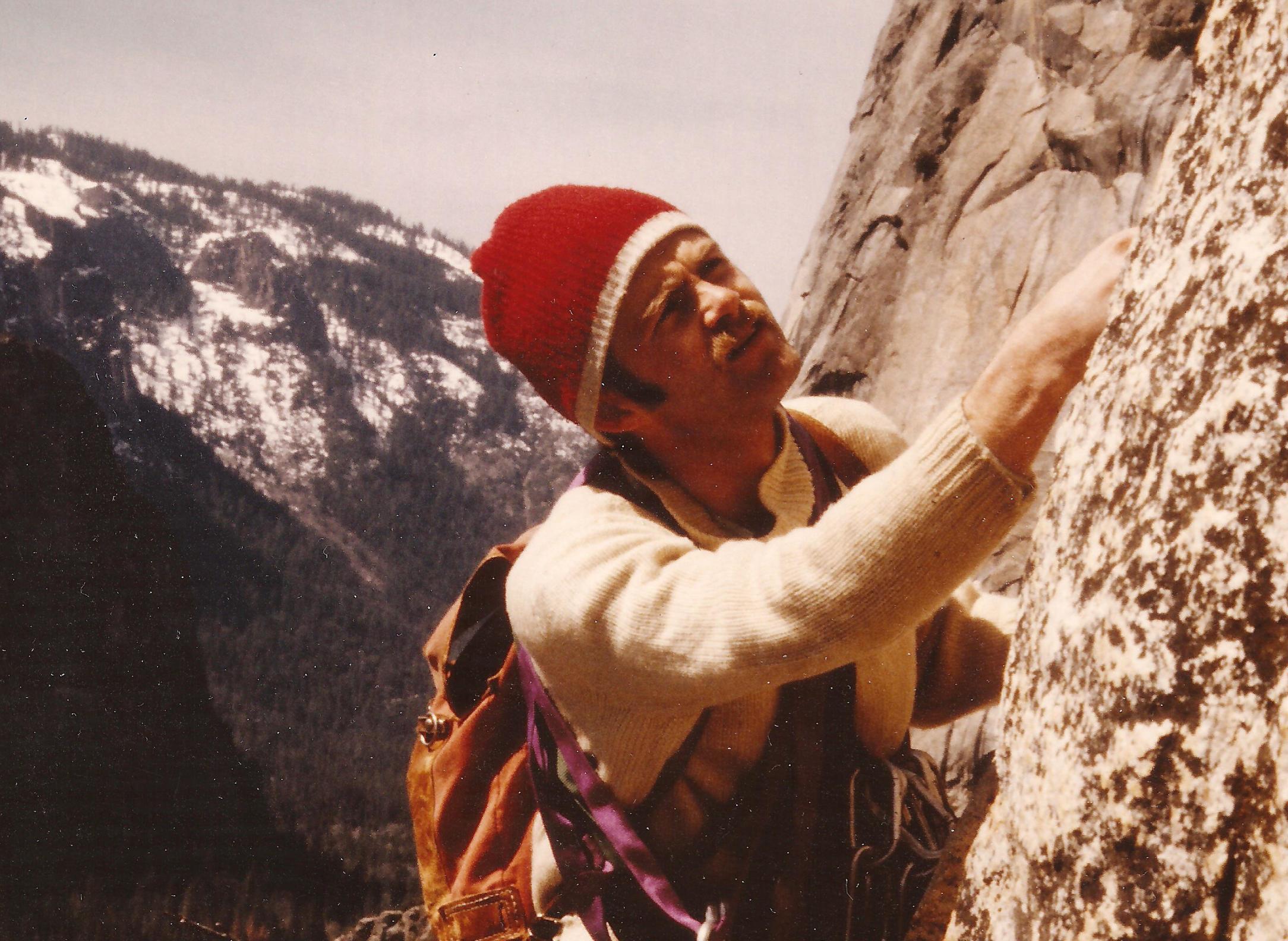By Claire Newfeld
 Many people know Dr. Evans as a Humane Letters and Latin teacher with an affinity for the Civil War era, nuclear weapons, fishing, and cats. But many do not know the other side of him. In his younger days, he was an avid mountain climber. De Equitibus asked him to share his experiences.
Many people know Dr. Evans as a Humane Letters and Latin teacher with an affinity for the Civil War era, nuclear weapons, fishing, and cats. But many do not know the other side of him. In his younger days, he was an avid mountain climber. De Equitibus asked him to share his experiences.
DE: How and when did you become interested in climbing mountains?
Dr. Evans: My dad and uncle climbed a lot in the Sierras when I was a little kid, and I always wanted to be like them. My uncle invited me on a Sierra Club rock-climbing trip at Tahquitz Rock in California when I was in high school, and I remember that when we drove away I looked back at the rock and thought, I have to do that again.
DE: What is the highest mountain or longest time it has taken you to climb?
Dr. Evans: All of my best climbs were technical rock climbs in Yosemite Valley and the high Sierras. I climbed three big walls in Yosemite. A big wall is a climb on which you have to spend more than a day on the climb due to length, difficulty, or both. My first wall, Washington Column South Face, took 2 1/2 days, and my second, Leaning Tower West Face, also took that long. My third route, the Chouinard Pratt route on Middle Cathedral Rock, took two days. We drove up to the valley on Friday, climbed Saturday and Sunday, drove home Sunday night, and I was back in English class at college on Monday. We slept in hammocks on that one, about 700 feet up. My favorite Sierra climb was when I climbed the East Face route on Mt. Whitney solo in one day, 14 hours car to car. I was going to bivouac (camp) on a ledge on the route, but I topped out at about 4 p.m. and decided to just hike back to the car. I got back about 9 p.m.
DE: Do you have any interesting incidents or crises you found yourself in while climbing?
Dr. Evans: Climbing is a continual crisis. That’s why it’s fun. I took a 30-foot leader fall in Yosemite once. A leader fall is when the guy who is climbing first, going above his belayer who holds the rope for safety, falls off. The leader attaches protection to the rock for the rope to run through and to catch him if he falls. I came off and ripped out all my protection points, taking what climbers call a zipper fall. It was a smooth cliff face, though, so I didn’t get hurt. On Washington Column, I got to lead an overhang, dangling out over a thousand foot drop. The next day my partner took a leader fall and pulled out his shoulder, so I had to lead the whole rest of the climb. On the Leaning Tower, we were in our sleeping bags on our first bivouac ledge late at night when we started hearing “tic-tic-tic” on our bags – it was starting to snow. We climbed the whole next day in a snowstorm, but we stayed fairly dry because that route is overhanging and the snow fell out away from us. On the Chouinard Pratt, my partner and I didn’t get along. On the last pitch before the bivouac we were yelling at each other, and a bunch of tourists down below thought we were in an emergency situation or something and were watching to see what happened. Then, while my partner was stringing his hammock, one piton pulled out and he dropped right in my lap. It was actually sort of funny. His words to me at that point were, “Hey, hold me up for a second, alright?” Maybe my favorite moment in climbing was on a climb that we did not complete. I had led out on hard climbing for 30 feet above my belayer with no protection points possible and had to do a hard and unprotected move onto the bivouac ledge. It would have been a long fall if I had come off, but I didn’t. There was a double fatality on that route a few years later when a leader fell and pulled off his belayer and they fell all the way down. I think I know where they fell from. Anyway, we stopped on the ledge and couldn’t get off it the next day and had to rappel down.
DE: Why did you stop climbing?
Dr. Evans: I got distracted and lost my edge. I decided it was time to move on. Nowadays the most exciting thing I do is paddling a canoe in Minnesota. I am very thankful for my climbing days, though. They were some of the best of my life.
